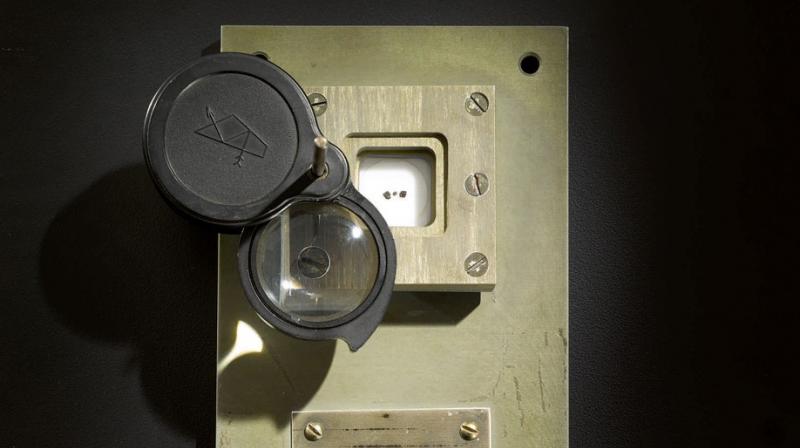Soviet-era moon fragments could reach USD 1 million at NY auction
Last year Sotheby's sold a zippered bag stamped with the words Lunar Sample Return laced with moon dust.

Wealthy space buffs will have the chance to own three small particles of lunar matter when what Sotheby’s describes as the only known documented “moon rocks” to be legally available for private ownership hit the auction block in November.
Sotheby’s said on Tuesday it expects the fragments, retrieved from the moon by a Soviet space mission in 1970, could fetch between USD 700,000 to USD 1 million at the Nov. 29 auction in New York.
The pieces - a basalt fragment, similar to most of the Earth’s volcanic rock, and bits of surface debris known as regolith - are being sold by an unidentified private American collector who purchased them in 1993.
Sotheby’s said in a statement they were first sold in 1993 by Nina Ivanovna Koroleva, the widow of former Soviet space program director Sergei Pavlovich Korolev.
The fragments, ranging in size from about .079 inch x .079 inch (2 x 2mm) to .039 inch x .039 inch (1 x 1mm), were presented to her as a gift on behalf of the Soviet Union in recognition of her late husband’s contributions to the program.
Sotheby’s said that the particles, encased under glass with a Russian plaque, are both the only known lunar sample to have ever been officially gifted to a private party, and with documented provenance to be available for private ownership.
Collectors pay huge sums for space exploration artefacts. Last year Sotheby’s sold a zippered bag stamped with the words “Lunar Sample Return” laced with moon dust which was used by Neil Armstrong for the first manned mission to the moon in 1969, for USD 1.8 million.
That sale took place after NASA lost a court battle to retrieve the artefact from a private collection.
Most other known samples taken from the moon remain with the two entities that collected them: the United States during the Apollo 11-17 missions and the Soviet Union via the unmanned Luna-16, Luna-20, and Luna-24 missions.
A number of other countries were gifted with Apollo 11 samples and Apollo 17 goodwill moon rocks on behalf of the Nixon administration, and in most places, the law bars transferring such gifts to individuals.
The particles being sold in November were retrieved in September 1970 by Luna-16 which drilled a hole in the surface to a depth of 13.8 inches (35 cm) and extracted a core sample.
They are encased under glass below an adjustable lens and labelled “ЧÐСТИЦЫ Ð"РУÐТРЛУÐЫ-16” [SOIL PARTICLES FROM LUNA-16].”
Tests on similar samples have dated the bits as being as much as 3.4 billion years old.
Click on Deccan Chronicle Technology and Science for the latest news and reviews. Follow us on Facebook, Twitter.

